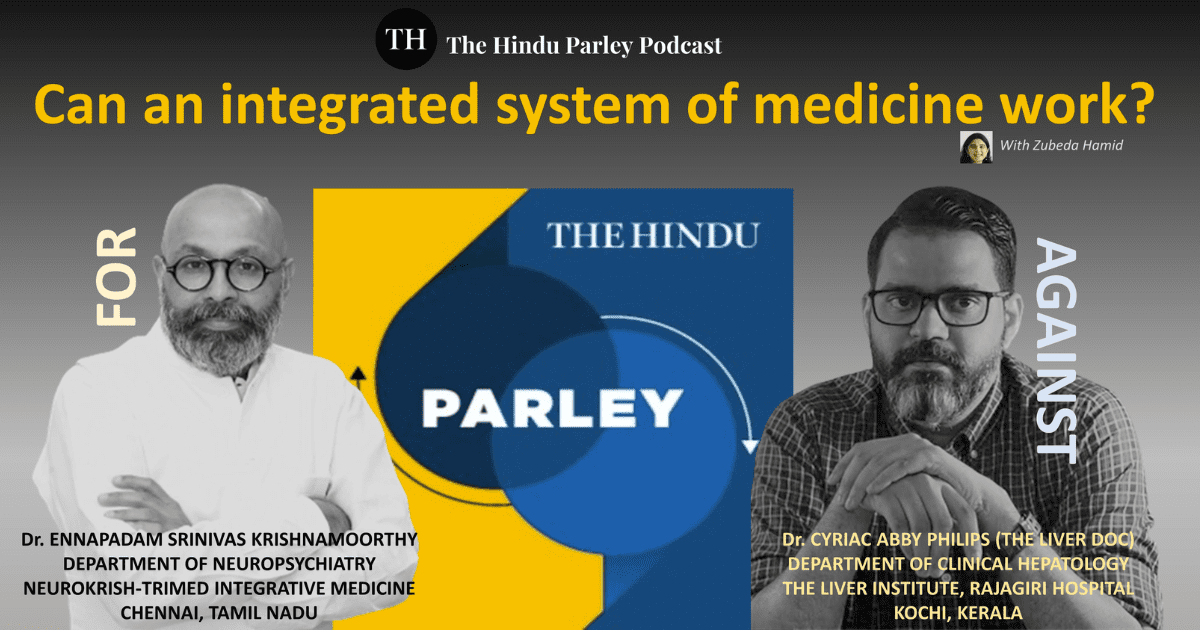Biography
It was yet another of those days when the young man had taken out his father’s car, lent to him grudgingly, with the mother peeping through the bedroom window of the palatial mansion to warn her son not to speed on the road. Dharmendra turned around to wave reassuringly to the parents as he took off at a respectable pace towards the gate. Once on the highway, with the heady sea breeze blowing on his face and his companions cheering him on, Dharmendra pressed the accelerator. That ill-fated night, Dharmendra, at the wheel, swerved to avoid a speeding motor bike and hit the roadside tree. His two companions escaped with mild injuries but Dharmendra suffered Traumatic Brain Injury (TBI). The road traffic accident was to change the course of his life drastically.
Dharmendra was admitted to a reputed city hospital in a semi conscious state, and was under acute care and close neurosurgical monitoring for several days. No seizure was reported. He was treated with corrective surgery for major physical injuries, which needed immediate attention as these multiple injuries, if left unattended, could add to the burden of brain trauma.
The traumatic brain injury (TBI) was managed conservatively. He mercifully escaped the worst immediate sequelae of TBI. He had recovered full orientation at discharge with loss of the right little finger in the accident, what appeared a small price to pay for the consequences of daredevil speeding on the highway.
But when Dharmendra was brought to us at Trimed-Neurokrish, 2 months later by the desperate parents, (who had heard of our holistic approach to neurorehabilitation from a friend) we knew at a glance that TBI had played havoc with his personality, mood and affect and to a lesser extent his cognitive ability. His explosive, impulsive behaviour was what we faced initially, with an air of intellectual superiority thrown in, which did not make our approach to him any easier. Management of behavioural complications of TBI is challenging and requires a multidisciplinary approach. With gentle persuasion, comprehensive all round assessment by our team members was made possible. We set about facing the major challenge we had taken on with that team spirit of hope and goodwill which has served us on many occasions.’’
Exploring the Condition
Dharmendra was in his 1st year Engineering course when he met with the accident. When he joined engineering college, the parents felt that he had become more mature, stable in his ways and was now a responsible individual, and breathed a sigh of relief. He had been a handful, especially for his mother, from childhood. He had performed below average in school. He had shown frequent irritability, anger and defiance towards figures of authority. He had been diagnosed with Attention Deficit Hyperkinetic Disorder (ADHD) with associated Oppositional Defiant Disorder (ODD) and treated for it as a child.
These underlying childhood behaviour disorders have an add-on effect on personality traits at the phase of post TBI recovery. The symptom complex was suggestive of a frontal lobe syndrome. After thawing the ice, during the first few difficult interviews, the clinical psychologist managed to record the chameleon-like changes in the colour of his moods and affect: easy going, emotionally expressive, cooperative, sensitive, keen to do the right thing on the one hand, on the other hard headed, adventure loving and prone to risk behaviours. He was prone to exhibiting high levels of anxiety, building up to a pitch to manifest anger, even rage, an episodic dyscontrol syndrome. Once the episode passed, Dharmendra was at peace with himself and with the rest of the world as if nothing had happened. Was he aware of these monstrous flare-ups in the early phase of his neurorehabilitation? Probably not.
Further psychological testing showed him to be intellectually average, with poor mathematical ability, but adequate ability in language and other subjects and fair visuomotor ability. He had taken to excessive substance abuse, smoking, and was addicted to video gaming. On physiotherapy assessment, the patient’s physical health was very satisfactory, free in activities of daily living (ADL), a Barthel Index of 100; normal gait and balance, poor ability to run due to poor endurance, with no subjective reporting of pain.
Frontal Lobe Syndromes
The degree of dysfunction caused by frontal lobe damage depends on the abilities and traits before the TBI, as well as the extent, location, and nature of the damage as a result of the TBI. To assess the frontal lobe damage, your physicians should give you a complete neuropsychological evaluation. The testing measures speech, motor skills, social behavior, spontaneity, impulse control, memory, problem solving, language, and more.
In a direct injury, the frontal and temporal poles receive the maximum impact. MRI brain revealed only a brainstem injury, but multiple networks from and to the frontal lobe, the limbic system, subcortical structures, brainstem etc. may account for the manifest frontal lobe syndrome (mainly dorsolateral prefrontal syndrome) in the patient. Aside from this, white matter lesion in the network cannot be picked up by standard MR imaging.
Frontal lobe damage affects most aspects of behavior, mood, and personality. Patients with dorsolateral frontal lesions tend to have lack of ability to plan or to sequence actions or tasks, poor attention span, a poor working memory for verbal information (if the left hemisphere is predominantly affected) or spatial information (if the right hemisphere mainly affected) Patients with orbitofrontal lesions tend to have problems of disinhibition, emotional lability, and memory disorders, Personality changes from orbitofrontal cortex damage includes impulsiveness.
References
- Jeffrey L.Cummings, MR Trimble. Concise Guide to Neuropsychiatry and Behavioral Neurology. II ed., American Psychiatric Publishing Inc, 2002, chapt. 5: 71-86Andrea E. Cavana Tourette Syndrome – Clinical Review , BMJ, Aug 2013 ; 347 :1-6
- RTA statistics – global and Indian: According to the WHO statistics, (2016) about 1.25 million people die each year globally as a result of road traffic accidents. Road traffic injuries are the leading cause of death among young people, aged 15–29 years. The newly adopted 2030 Agenda for Sustainable Development with over 150 nations participating, has set a road safety target of halving the global number of deaths and injuries from road traffic crashes by 2020.
- The detailed age profile of accident victims in India other than the drivers (Ruikar 2011), revealed that the age group between 25 and 65 years accounted for the largest share, 51.9%, of total road accident casualties, followed by the age group between 15 and 24 years, with a share of 30.3%
- WHO fact sheet on road traffic Injuries (reviewed in Nov. 2016) Manisha Ruikar National statistics of road traffic accidents in India –Symposium- Polytrauma Management, rehab- J Ortho, traumatology,rehab 2013 Vol 6. :1 : 1-6
Our Healing Approach
Dharmendra was given long term medication with constant monitoring and titration of the drug dosage. He was on Oxcarbamazepine & Levitiracetam (both for the control of seizure/episodic dyscontrol), Sertraline (antidepressant), Atomoxetine (to encourage mental alertness, attention) and vitamin supplements. He had had long sessions of cognitive behaviour therapy, distributed over 24 staggered sessions.
The integrative therapy included apart from continued sessions with the clinical psychologist using an eclectic combination of Cognitive Behavior Therapy (CBT), Relaxation Training (Jacobson’s Progressive Muscle Relaxation) and Family Therapy; 15 sessions of Acupuncture, 15 of Reflexology, 10 Abhyangam and 10 Shirodhara. The scientific principle behind these therapies is to remove blocks in the energy channels of the body and to reestablish the free flow of bodily energies in the path to recovery.
On this regimen and the integrated therapies, the spells of anger and dyscontrol became progressively less frequent and less intense. Running parallel, his cognitive ability also improved. The Trimed-Neurokrish team came to a consensus that Dharendra was ready to go back to college after these three months of intensive therapy.
Formal parent education sessions, for them to understand clearly that Dharmendra’s behaviour was not willful, but part of the frontal lobe syndrome, was an important exercise, and was carried out meticulously, resulting in the full support of the parents towards medical management of their son.
Dharmendra returned to 2nd year Engineering in the college after a long gap. He seemed to cope, but tended to sleep in class miss special classes, with increasing arrears, which made him anxious and as a result to increase the number of cigarettes he smoked. The parents showed great concern and follow up sessions with Trimed-Neurokrish had to be more frequent. Divalproex & Olanzapine- Fluoxetine were added to the drug regimen (replacing Levetiracetam and Sertraline), with subsequent control of these worrying symptoms. The patient went through the second year of Engineering College with occasional problems.
Looking Ahead
Dharmendra settled well, with improvement in cognition, better memory and attention and more stable behavior in his 3rd year Engineering. He still has rare dyscontrol episodes but these are few and far between. Periodic psychological sessions continue both scheduled and on demand. With improved academic performance, and in a mood of goal orientation, he managed to clear his academic arrears and seems well on his way to facing a professional career of significance. When will he be allowed to drive the car again, he wonders. His own, this time!






